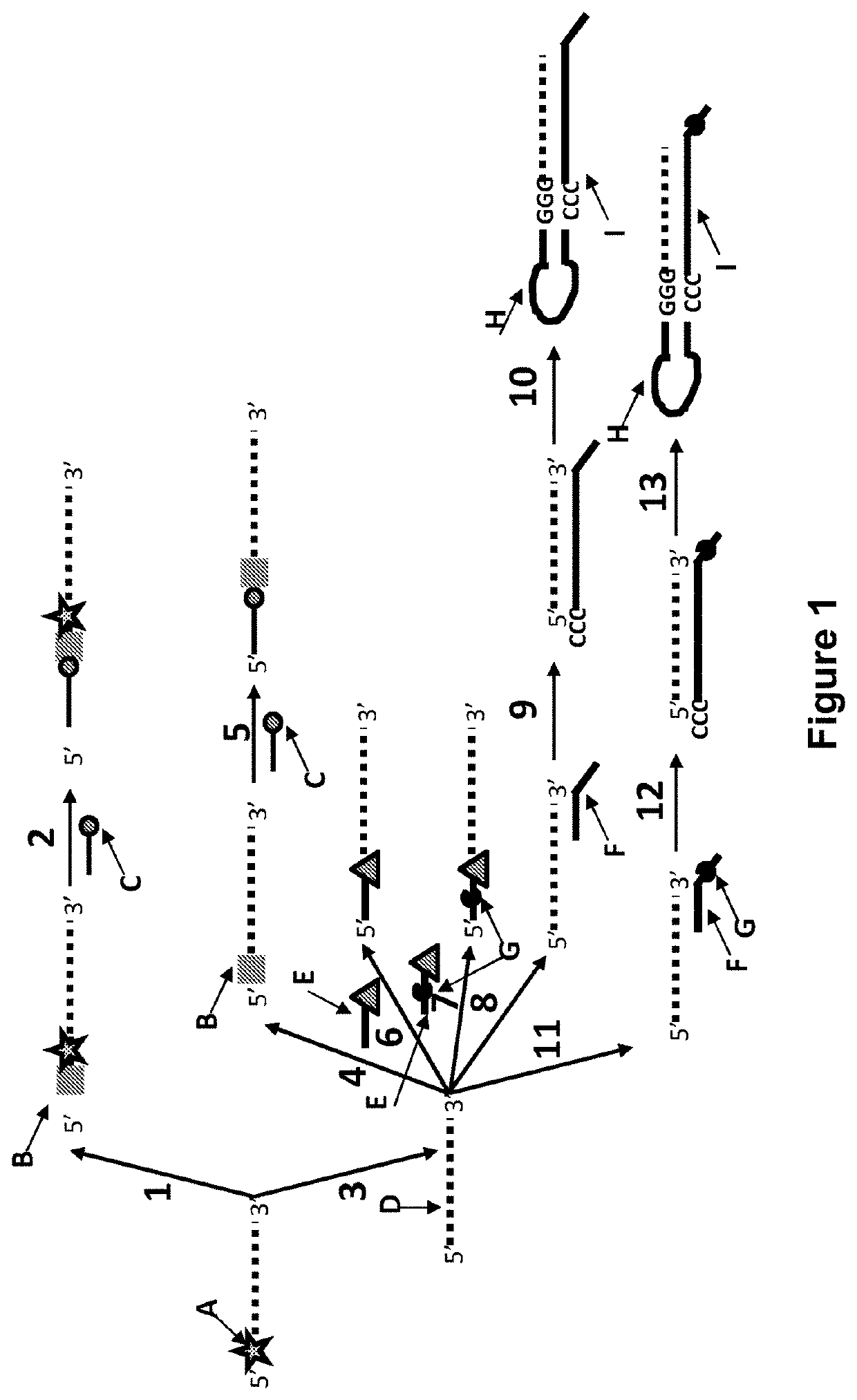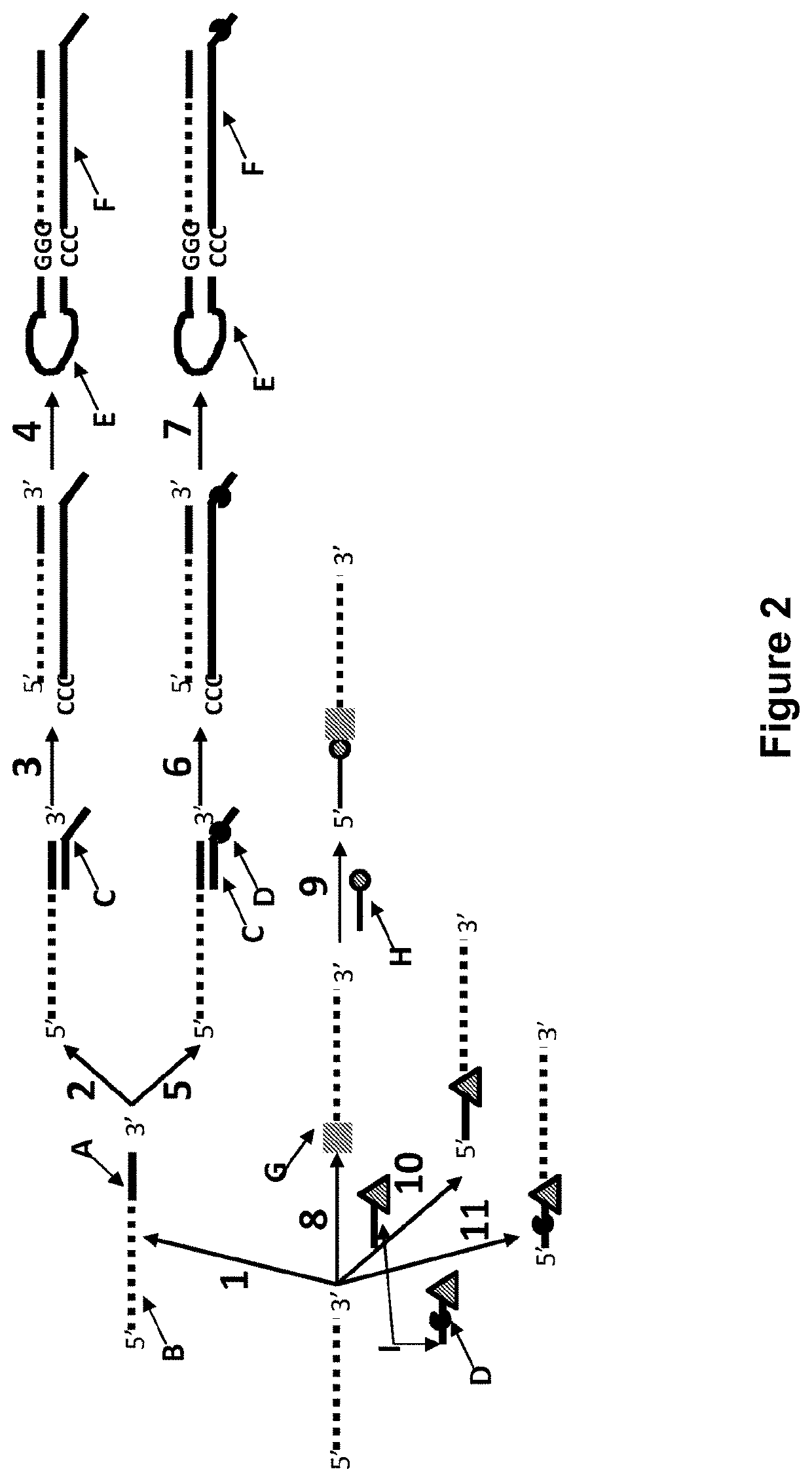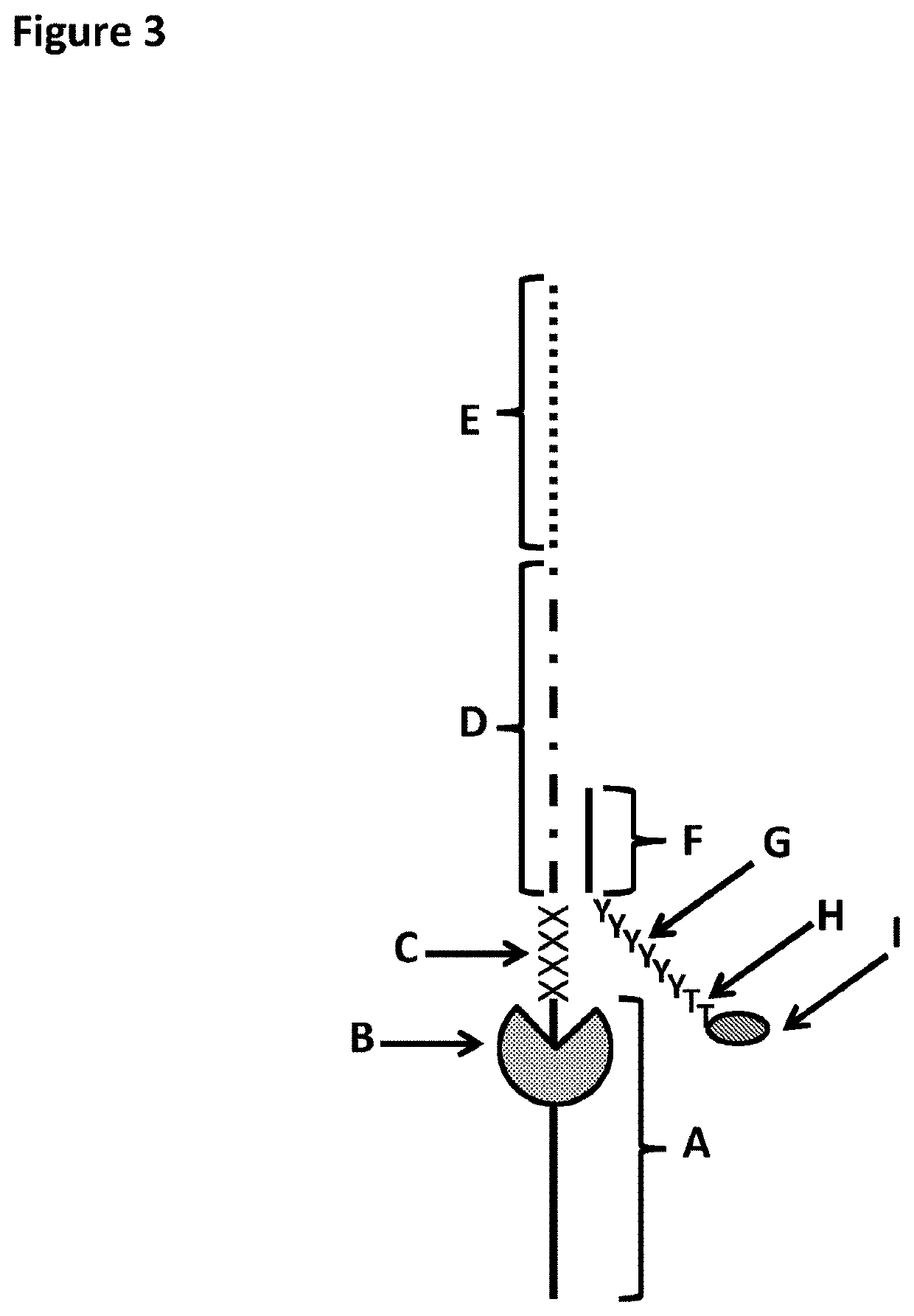Method for nanopore RNA characterisation
a polynucleotide and target technology, applied in the field of target rna polynucleotide characterisation, can solve the problems of loss of vital information, slow and expensive existing technologies, etc., and achieve the effect of improving accuracy and speed, and facilitating the movement of helicas
- Summary
- Abstract
- Description
- Claims
- Application Information
AI Technical Summary
Benefits of technology
Problems solved by technology
Method used
Image
Examples
example 1
[0375]This example shows the sample preparation procedure which 1) extended the RNA region of an RNA / DNA strand, 2) annealed an anchor, 3) bound an enzyme and then 4) tested the resultant strand in an electrophysiology experiment. This example illustrated that it was possible to use a DNA helicase (T4 Dda—E94C / A360C (SEQ ID NO: 14 with mutations E94C / A360C and then (ΔM1)G1)) to control the movement of a synthetic DNA / RNA strand (DNA leader attached to an RNA strand, shown in FIG. 3) through an MspA nanopore.
Materials and Methods
1.1 Extension of the 3′ End of an DNA / RNA Strand Using Poly(U) Polymerase
[0376]The reagents listed in Table 3 below were mixed and incubated at 37° C. for 10 minutes. The mixture was then purified using Agencourt Ampure SPRI beads at a ratio of 1.8 μL SPRI beads per L of sample. This sample was known as sample 1 (DNA / RNA 2). FIG. 4 shows that the polymerase extension reaction was successful as a broad band labelled Y in the figure corresponded to variably ext...
example 2
[0384]This example shows the ligation of a DNA strand (SEQ ID NO: 21) to an RNA strand (SEQ ID NO: 19) using T4 DNA ligase.
Materials and Methods
2.1 Ligation of a DNA Strand to an RNA Strand Using T4 DNA Ligase
[0385]The reagents listed in Table 5 below were mixed and placed on a thermocycler. The thermocycler was set to the program in Table 6 below. The samples were then analysed using a 10% PAGE TBE-Urea denaturing BioRad Criterion Gel which was run at 140 V for 60 minutes.
TABLE 5StockFinalReagentVolumeConcentrationConcentration5′ phosphate RNA (SEQ ID0.3 ul50 uM 1 uMNO: 19)T4 DNA ligase buffer1.510x1xT4 DNA ligase 1 ul10 U / ul10 UDNA splint (SEQ ID NO: 20)0.3 ul50 uM 1 uMCy ®3 DNA (SEQ ID0.6 ul50 uM 2 uMNO: 21)ATP0.3 ul50 mM 1 mMNF H2O 11 ulTotal 15 ul
TABLE 6Number ofCyclesStepTemp (° C.)Time1Ligate251:00:001Denature650:10:00
Results
[0386]The TBE-Urea denaturing gel was used to analyse the ligation of CY®3 DNA(SEQ ID NO: 21) to RNA (SEQ ID NO: 19). FIG. 8, lanes 2-3 showed the contr...
example 3
[0387]This example shows a sample preparation procedure that chemically attached a DNA strand to an RNA strand using click chemistry. This was carried out on two different samples one of which had a fluorescent group attached to the DNA, in order for the chemical attachment step to be confirmed using gel electrophoresis. The DNA / RNA strand that did not have a fluorescent group attached was then tested in an electrophysiology experiment. This example illustrated that it was possible to use a DNA helicase (T4 Dda—E94C / A360C (SEQ ID NO: 14 with mutations E94C / A360C and then (ΔM1)G1)) to control the movement of an RNA strand that was attached to a non-RNA polynucleotide by copper-mediated click-chemistry (cartoon representation of the construct is shown in FIG. 10) through an MspA or Lysenin nanopore.
Materials and Methods
3A.1 Click Reaction of DNA X1 to RNA X1
[0388]The RNA X1, DNA X1 and splint X1 (listed in Table 7 below) were mixed in buffer (TRIS-NaCl (500 mM-2.5M) pH 8). The DNA X1,...
PUM
 Login to View More
Login to View More Abstract
Description
Claims
Application Information
 Login to View More
Login to View More - R&D
- Intellectual Property
- Life Sciences
- Materials
- Tech Scout
- Unparalleled Data Quality
- Higher Quality Content
- 60% Fewer Hallucinations
Browse by: Latest US Patents, China's latest patents, Technical Efficacy Thesaurus, Application Domain, Technology Topic, Popular Technical Reports.
© 2025 PatSnap. All rights reserved.Legal|Privacy policy|Modern Slavery Act Transparency Statement|Sitemap|About US| Contact US: help@patsnap.com



